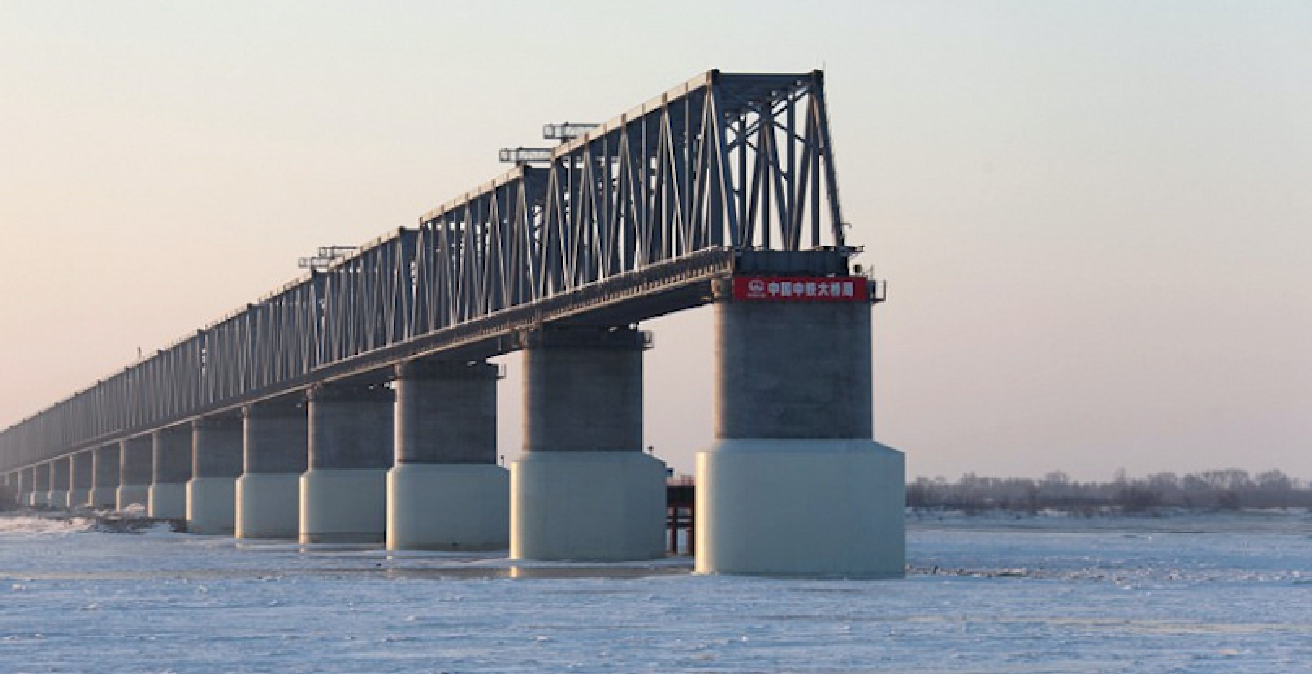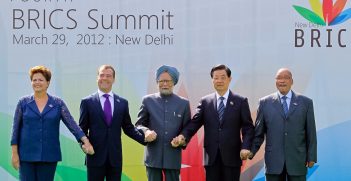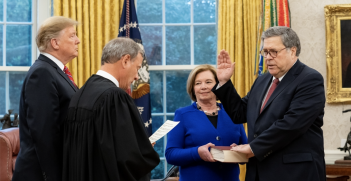The Implications of a True Russia-China Alliance

The development of a de facto alliance between Moscow and Beijing, driven by their increasing anti-Western alignment, could mark the return of the “old-fashioned” great power alliances between equals.
The contemporary quasi-alliance between Moscow and Beijing is already more than two decades old. The Sino-Russian “strategic partnership” was proclaimed in April 1996. The timing was not coincidental. The mid-1990s marked a watershed both in Russia’s and China’s foreign policies. Moscow felt bitter disappointment and even anger with the West, and perceived itself being treated as a defeated adversary that could at best be a junior partner in the US-dominated order. At the same time, Beijing was subjected to the humiliation of the 1995-96 Taiwan Strait crisis, which demonstrated China’s impotence vis-à-vis the American superpower. In April 1997, Boris Yeltsin and Jiang Zemin signed the Declaration on a Multipolar World and Formation of a New International Order, which stated their opposition to the US-centered hegemony.
After Vladimir Putin succeeded Yeltsin in 2000, there was a brief interlude when Russia attempted to strengthen relations with the West and, for a while, partnership with China lowered in importance for the Kremlin. Yet from the mid-2000s Russia’s relations with the US and its Western allies began to deteriorate, culminating in the Ukraine crisis of 2014 and the US election meddling scandal.
Post-Ukraine, Russia faced growing hostility and isolation from the West and pushed for closer ties with China. Beijing was generally receptive. The Chinese leadership saw Russia as a useful counterforce to the domineering US, but Beijing was cautious in advancing its strategic bonds with Moscow. Although China had its problems with the US, they were still deemed manageable and Beijing had no intention to antagonize Washington by associating itself too closely with a combative Russia.
Beijing’s calculations may now be changing, as consensus has gelled in Washington that China presents the most significant threat to the US. Russia is still considered a rogue state by the US mainstream, but Beijing can no longer hope that the Kremlin’s shenanigans will distract Washington from dealing with China. The metaphorical Eye of Sauron is now firmly on China. Beijing will either have to capitulate to the US or take a stand. If it chooses the latter, as seems likely, it needs strong allies to withstand American pressure. Russia is the only available option. This is leading to the situation when both Russia and China could see it worthwhile to dramatically upgrade their strategic partnership which up to now has developed steadily, albeit slowly and incrementally.
Picturing a True Sino-Russian Alliance
Should Moscow and Beijing decide to elevate their relationship to the level of a de facto or perhaps even de jure alliance, it will result in a rapid enhancement of Sino-Russian cooperation in four crucial areas: economic, technologic, political and military.
In the economic sphere, China is already Russia’s top trading partner: except for the EU whose trade with Russia is still much bigger collectively. In 2018, for the first time, Russia-China trade exceeded $100 billion. In 2016, Russia displaced Saudi Arabia as China’s top supplier of crude oil. The Power of Siberia pipeline will soon start delivering natural gas to China, with Putin pledging to increase contracted volumes as the Chinese demand for gas rises. Russia has also increased food supplies to China. Two bridges across the Amur River symbolise Russia’s growing closeness to China. One is meant for rail traffic and the other for vehicles, and the construction of both is nearing completion. For centuries the Amur has been the main boundary between Russia and China, but there was not a single permanent bridge across the border river. Now there are two.
China’s economic decoupling from the US and its Western allies, including Australia, will increase Chinese interest in Russian commodities. Russian supplies, most of which come overland, are also more secure in the light of a possible trade embargo and naval blockade: options the US and its allies may take in a military conflict with China. Such considerations will also lead to significant growth in Chinese investments in Russia that are currently negligible, as well as more integrated financial systems. In the financial domain, Russia’s turn to China is already happening. In 2018 Russia’s Central Bank drastically reduced the share of its assets held in the US from 29.9 to 9.7 percent. At the same time, the Central Bank increased its Chinese holdings from 2.6 to 14.1 percent. The share of the Russian Central Bank’s dollar-denominated reserves also decreased from 45.8 to 22.7 percent, while its yuan holdings jumped from 2.8 to 14.2 percent. In June this year, Moscow and Beijing inked an agreement to switch to national currencies in bilateral trade as they ramp up efforts to move away from the US dollar.
Technology is currently the weakest link in Sino-Russian cooperation. Technological nationalism on both sides is a major obstacle. Russia and China have yet to show they can effectively collaborate on major hi-tech projects and achieve the levels of technological integration and division of labor found in the West. Previously agreed projects, such as the joint development of a wide-body passenger jet able to compete with Boeing and Airbus, have not made much progress. This can change as China is losing access to Western technology due to new restrictions. Making a technological alliance with Russia, which has some pockets of scientific and hi-tech excellence, will be one way for China to deal with a Western technological blockade.
In the political realm, a Sino-Russian alliance will mean ever closer coordination on diplomatic issues, both on the global stage and in regional dimensions. The Kremlin already appears to have chosen to refrain from balancing China in East Asia and may even be aiding Chinese hegemonic pursuits in the Asia-Pacific. On the major issues of East Asian geopolitics, such as the Korean Peninsula or the South China Sea, Russia has tended to support China or display friendly neutrality.
Sino-Russian diplomatic collaboration is also helped by the fact that both adhere to the logic of spheres of influence. There appears to be an understanding between Putin and Xi Jinping that Moscow defers to Beijing on East Asian issues while, in return, the Chinese recognize Russia’s leading role in much of the post-Soviet space and the Middle East. Beijing would formally recognize Crimea as part of Russia while Moscow could endorse Chinese sovereignty claims in the South China Sea and over the Senkaku/Diaoyu islands.
In the near term, Russia and China are unlikely to adopt legally binding mutual defense obligations à la NATO’s Article 5. However, this is not inconceivable in the longer term. Ever since the 1990s, the military cooperation between Moscow and Beijing, including arms purchases, joint exercises and strategic consultations, has been steadily increasing in scope, scale and complexity. As Russian military expert Vasily Kashin notes, while Russia and China officially deny they intend to form an alliance, “the scale and nature of their joint activities in the military, security, and defense technology fields are consistent with preparation for possible joint military action against a major hostile country.”
The Sino-Russian axis is already beginning to seriously complicate American military planning. As some American commanders acknowledge, the US does not have the capacity to deal simultaneously with a resurgent Russia in Europe and the Chinese challenge in the Pacific. A scenario in which China and Russia take coordinated military actions in the Pacific and European theaters — that is China invades Taiwan while Russia conducts a large-scale military operation in Europe — no longer looks purely imaginary.
The Return of Great Power Alliances?
One frequently-heard objection to the possibility of a Sino-Russian alliance is that Russia would be a dependent and hence resentful partner. There is no denying the growing disparity in economic might between Russia and China. However, economic asymmetry is not equal to political subordination. North Korea, for example, depends on China for 90 percent of its trade but it retains full political autonomy. As long as Russia keeps a great-power mindset and wields nuclear weapons, it will not be junior to China politically. After all, Russia has been Europe’s resource periphery for centuries while acting politically as a great power. Why not repeat the same pattern with China?
For a long time, perhaps since 1945, international politics has not seen alliances made up of equal great powers. We have gotten used to the notion of an alliance that consists of the dominant power and its dependent junior partners. This is another reason why it is difficult for many experts and policymakers to imagine a Sino-Russian alliance. However, the return of great power politics which many admit is now happening may also revive the “old-fashioned” great power alliances between equals.
Numerous Western strategists recognise the “growing alignment of Chinese and Russian strategic interests.” In order to deal with the danger, a recent Pentagon-commissioned white paper suggests the US should “foster distrust and unease between the Russian Federation and China.” Such recommendations sound naïve. Russia and China are being driven toward an alliance by the most elementary law of international politics: that of the balance of power. As long as the US is perceived by Moscow and Washington as the preponderant and threatening force, their anti-Western alignment will only deepen. The only way to prevent this is for the US to reach durable accommodation with Russia or China, or both. However, this option appears off the table in Washington, for now.
Associate Professor Artyom Lukin is an associate professor at the School of Regional and International Studies at Far Eastern Federal University in Vladivostok. He is one of Russia’s leading experts on Asia-Pacific geopolitical issues.
This article is published under a Creative Commons Licence and may be republished with attribution.





